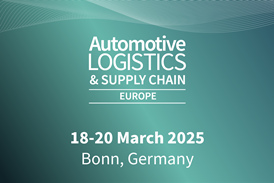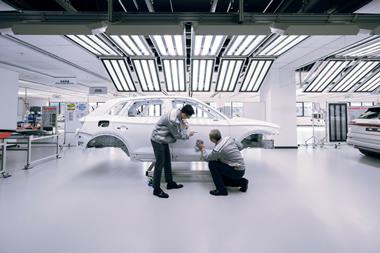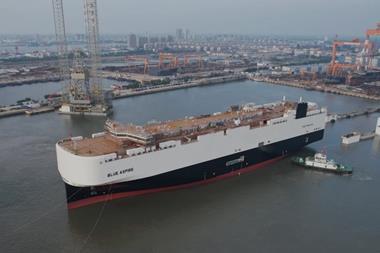 Over the next five years the aftermarket landscape is going to change in some important ways as developments in areas such as 3D printing, telematics, e-commerce and collision avoidance systems influence customer expectations. That in turn is going to affect the intricate balance, on the part of the OEM, between cost, quality and speed in the delivery of service parts. These topics and more were under discussion in this week’s Automotive Logistics webinar ‘Aftersales and service parts in the next five years’, sponsored by UPS and presented by Volkswagen Group of America’s Jan Bures, executive vice president, Aftersales and Service, and Anu Goel, vice president of logistics – Aftersales.
Over the next five years the aftermarket landscape is going to change in some important ways as developments in areas such as 3D printing, telematics, e-commerce and collision avoidance systems influence customer expectations. That in turn is going to affect the intricate balance, on the part of the OEM, between cost, quality and speed in the delivery of service parts. These topics and more were under discussion in this week’s Automotive Logistics webinar ‘Aftersales and service parts in the next five years’, sponsored by UPS and presented by Volkswagen Group of America’s Jan Bures, executive vice president, Aftersales and Service, and Anu Goel, vice president of logistics – Aftersales.
Customer service and inventory management in the aftermarket has progressed rapidly as OEMs compete for customer loyalty. As a consequence it is now harder for OEMs to differentiate their service parts offering for a competitive advantage. The answer according to Goel is to work on performance and look at new business models in relation to the changing technology on offer in the vehicle.
Citing Tesla, Goel highlighted how the company is looking at software updates in the same way others are looking at parts deliveries. He said that one question OEMs should be asking themselves now was whether their distribution models factored in software updates for vehicles in a timely efficient manner?
OEMs also need to ensure the customer is fully aware of the technology available in their cars. Goel said that satisfaction scores canvassed from US car buyers revealed that 80% do not understand the telematics offerings in their vehicles and interpret their failure to use it as quality issue with the vehicle itself.
“Future technologies will have a deep impact on how close we have to get to the customer and how we cooperate with other brands,” added Bures.
Bures admitted that the OEMs had fallen behind the independent providers of online services for parts and repair. He said such providers as Autozone and Pepboys were now managing a sizable share of the parts and service market. Pepboys for one witnessed nearly 100% growth in online purchases last year, with Autozone trailing it with between 50-60% growth, both primarily from B2C trade and those customers looking for online deals. OEMs need to capture this market and move beyond their traditional B2B models.
“We must come up with ideas with how we can battle the advantage they are operating on and offer similar ideas to our dealers,” said Bures.
At the same time VW Group offers its Carnet and AudiConnect systems, which offer mobility services for the connected car sends information about faulty parts to the dealer.
Goel said that what carmakers need to do now is use the technology for customer retention, not just for the actual repair.
“You have to ask how can you use the information to create a bond with the customer and get a VW owner for life,” he stressed.
3D printing at the dealer
One major influence on the supply of service parts, according to Goel, is 3D printing, otherwise known as adaptive manufacturing. He noted that certain vehicle makers will be using 3D printed parts in production next year but asked what implication it had for the service parts business.
The technology is already being considered for low volume parts production and as the cost comes down it could be a better option than small batch runs at suppliers. Other applications include the printing of specialist tools for low volume parts. Goel said it was important to ask what you would do if you were a dealer and had a 3D printer in your store.
“One, the technology is here today and it is evolving at light speed,” said Goel. “Near-term, for us I think it can help us with tooling for low volume parts. Mid-term it could help us with low volume parts or long lead-time, back-order type items. And longer term, it could help us with mid-volume parts.
3D printing also offers savings for inventory, warehousing and labour expenditure.
Most OEMs have anywhere between 30%-50% of their inventory dollars invested in parts that generate 5% of their demand,” noted Goel. “If you could do 3D printing, think of the amount of money that you could take out of your inventory expenditure and what you could take out of the associated warehouse space and labour. It is more than just a supply issue, it is an inventory investment and a physical building and labour opportunity as well.”
However, he pointed out that if was of use to VW then it was of use to the competition, something of which every OEM needed to be cognizant.
Collision avoidance
One other major influence on the service parts sector is going to be in the supply of collision avoidance parts – a business estimated to be worth $43 billion a year in the US alone. There are going to be some significant shifts in the supply of parts as the technology advances. US government forecasts suggest that in the next several years 30% of collisions will be avoided which translates to a decline in parts sales related to crash repairs. At the same time, there is likely to be an increase in the number of collision applications used. Goel cited the airbag as a good example of what this could mean for the sector.
“Within a seven year period front airbags went from being in 10% of vehicles to being in 90% of vehicles,” he said. “We all know what that means for material storage in our buildings. Collision avoidance technology is going to do the same thing but we have some prior lessons that we can learn from in this regard. This is one of the biggest near term implications.”
With regard to all the developments affecting the aftermarket for the OEMs it is going to be a balancing act between quality and cost concluded Bures.
“This is a changing environment that will have an impact on the supply and distribution landscape,” he said. “It has to make sense from the OEM and the logistics providers point of view at the same time as meeting customer expectation.” Expectations which changed as fast as the technology on offer.
Go here to access the full presentation and the discussion that followed





















